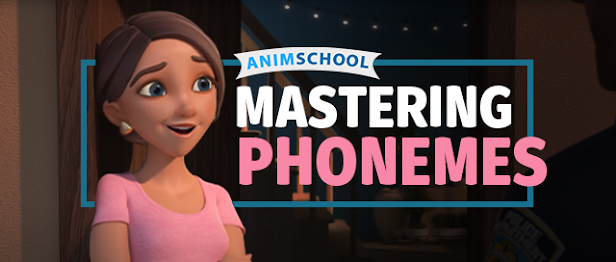
AnimSchool instructor Ricky Renna explains what Phonemes are and how to employ them in your lipsync to create a believable and natural performance.
Phonemes are the building blocks of human speech and are fundamental when learning to effectively communicate. As animators, one of our goals is to find a way to convey thoughts, feelings, and in this case, language. Mastering phonemes is an important step towards this goal.
Phonemes are defined as the perceptually distinct units of sound in a specified language that distinguish one word from another. In animation terms, we can think of it as the different “mouth shapes” that create words. As you animate, it’s crucial to understand how to break down a word into the correct phonemes to allow it to read correctly.
Lipsync Tips
- Use every sound to your advantage: listen closely for each and every enunciation.
- Don’t over complicate: achieve your mouth shapes in the simplest way possible.
- Listen to the sound, not the letter: sounds can be different than how they are written.
In an example from Disney’s Ratatouille, Ricky points out how many of the sounds get “mashed” together into one phoneme, and that it typically takes two frames to go from one phoneme to the next. He explains that two frames is his “magic number” when it comes to animating mouths, especially when a character is speaking quickly.
As part of a live AnimSchool lecture,
At AnimSchool, we teach students who want to make 3D characters move and act. Our instructors are professionals at film and game animation studios like Dreamworks, Pixar, Sony Pictures, Blizzard & Disney. Get LIVE feedback on your Animation from the pros.
Our alumni currently enjoy a 92% placement in the industry within 6 months of graduating.
Start your animation journey in our accredited online animation program at animschool.edu (ACCSC)



